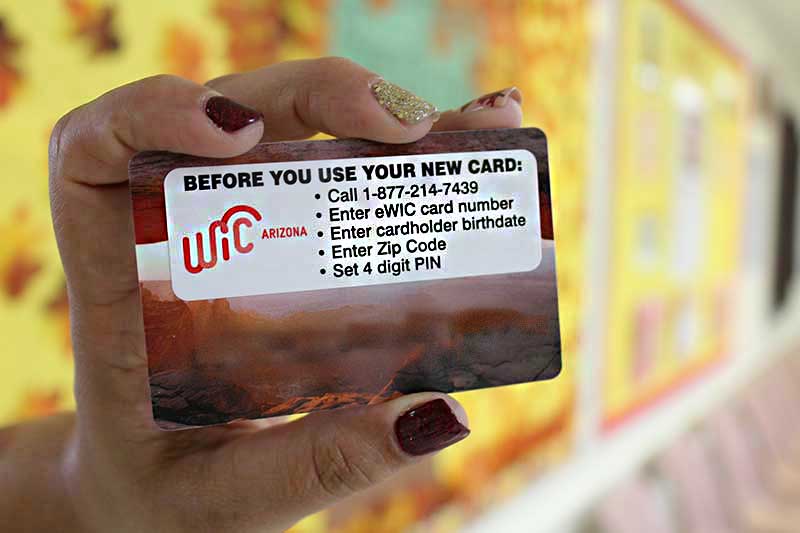
Applying for WIC (Women, Infants, and Children) in Arizona is a process that ensures eligible individuals and families receive nutritional assistance. The program provides benefits for food, healthcare referrals, and nutrition education. Here's a detailed step-by-step breakdown of how to apply for WIC in Arizona, demonstrating how theoretical processes, such as eligibility checks and required documentation, can be put into practice:
Step 1: Check Eligibility
To apply for WIC in Arizona, you need to make sure you meet the basic eligibility requirements:
- Residency: You must be a resident of Arizona.
- Income: WIC is designed for low-income families, and applicants must meet income guidelines. The maximum income level is typically at or below 185% of the Federal Poverty Level (FPL).
- Categorical Eligibility: WIC serves:
- Pregnant women, breastfeeding mothers, and postpartum women.
- Infants (up to 1 year old).
- Children (up to 5 years old).
- Nutritional Need: There must be a nutrition-related risk. WIC doesn’t require an existing health condition, but there must be an indication that the applicant could benefit from the program (such as being underweight, at risk for developmental delays, or having other nutrition-related issues).
Theory Applied: In this first step, we are applying the principle of
eligibility screening, which is commonly used in program management. By clearly defining who can benefit from WIC, we ensure that resources are directed to those who need it most.
Step 2: Gather Required Documentation
To apply, you’ll need to gather certain documents that prove your identity, income, and nutritional risk. These may include:
- Proof of identity (e.g., birth certificate, driver’s license, or passport).
- Proof of income (e.g., pay stubs, tax returns, or documentation of any public assistance).
- Proof of residency (e.g., utility bills, rental agreements, or bank statements).
- Health records (like immunization records or any medical documentation of nutritional risk).
Theory Applied: This step reflects the
data collection stage of application processes. In the context of WIC, the collection of personal, financial, and health data ensures compliance and verifies that applicants meet the eligibility standards.
Step 3: Schedule an Appointment
Once you have all your documents ready, you need to schedule an appointment with a local WIC office. This can typically be done by:
- Phone: Call the Arizona WIC helpline or a local office.
- Online: Some counties in Arizona allow scheduling through an online portal or website.
Theory Applied: This is an application of
accessibility and user-friendliness. Scheduling can be done via multiple channels (phone, online) to accommodate different user preferences, improving access to the service.
Step 4: Attend the Appointment
At your scheduled appointment, a WIC staff member will assess your eligibility. They will:
- Review your documents.
- Conduct a health assessment (for infants and children, this might include height, weight, and iron levels).
- Discuss any nutritional concerns you or your child may have.
- Issue you a WIC ID card (if approved) that will allow you to redeem benefits.
Theory Applied: This is where the theoretical process of
needs assessment comes into play. WIC counselors assess the unique needs of each individual, ensuring that the services provided align with the individual’s or family’s requirements.
Step 5: Receive Benefits
If you are approved for WIC, you will receive benefits that may include:
- Food Packages: These packages include nutritious foods like fruits, vegetables, whole grains, dairy, eggs, and baby formula. They are tailored to the nutritional needs of each participant.
- Nutritional Counseling: You may receive advice or follow-up appointments to ensure you and your child’s nutritional needs are being met.
- Breastfeeding Support: If you're a breastfeeding mother, WIC offers support and education to help ensure the success of breastfeeding.
Theory Applied: Here, we are applying the principle of
resource allocation. WIC provides not only financial aid (in the form of food benefits) but also services that enhance overall health, ensuring that beneficiaries can make use of the food and support provided.
Step 6: Ongoing Certification
WIC benefits are typically provided for a set period, after which you must recertify to continue receiving support. This includes:
- A follow-up health checkup.
- Updating income and residency information.
- Reassessing any nutritional needs.
Theory Applied: This step demonstrates
program sustainability and monitoring. Continuous eligibility verification ensures that benefits are only provided to those who still qualify, helping the program remain sustainable and responsive to changes in participants' circumstances.
Step 7: Use Your WIC Benefits
Once enrolled, you can use your WIC benefits at participating stores. WIC food can only be redeemed at authorized locations, and you’ll have a WIC card that works like a debit card or vouchers that you can use to buy specific foods.
Theory Applied: This is a practical example of
program execution and service delivery. The benefits are distributed in a tangible, actionable format, allowing recipients to access the resources they need to improve their health and well-being.
Conclusion:
The WIC application process is an excellent example of how a well-thought-out program can be practically implemented through a series of logical, organized steps. Each step—from eligibility determination to benefit redemption—reflects core program management principles like
eligibility screening, data collection, needs assessment, resource allocation, and ongoing monitoring.
By following this structured process, Arizona ensures that eligible families have access to critical nutritional support, fostering healthier communities and promoting better outcomes for mothers, infants, and children. This approach also highlights the practical application of complex systems in a real-world, user-centered context.
 Applying for WIC (Women, Infants, and Children) in Arizona is a process that ensures eligible individuals and families receive nutritional assistance. The program provides benefits for food, healthcare referrals, and nutrition education. Here's a detailed step-by-step breakdown of how to apply for WIC in Arizona, demonstrating how theoretical processes, such as eligibility checks and required documentation, can be put into practice:
Applying for WIC (Women, Infants, and Children) in Arizona is a process that ensures eligible individuals and families receive nutritional assistance. The program provides benefits for food, healthcare referrals, and nutrition education. Here's a detailed step-by-step breakdown of how to apply for WIC in Arizona, demonstrating how theoretical processes, such as eligibility checks and required documentation, can be put into practice:






Comments
Post a Comment